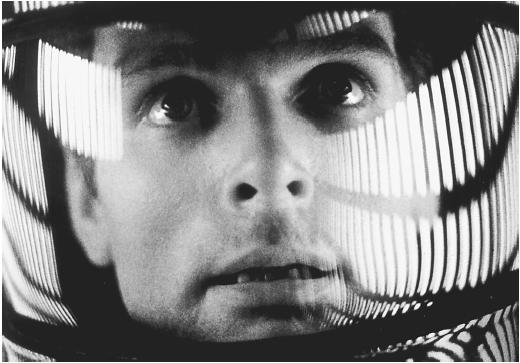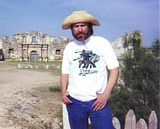Post by Greg C. on Mar 5, 2008 17:16:53 GMT -5
Starring:
John Wayne ... Col. Davy Crockett
Richard Widmark ... Jim Bowie
Laurence Harvey ... Col. William Travis
Frankie Avalon ... Smitty
Patrick Wayne ... Capt. James Butler Bonham
Linda Cristal ... Graciela Carmela Maria 'Flaca' de Lopez y Vejar
Joan O'Brien ... Mrs. Sue Dickinson
Chill Wills ... Beekeeper
Joseph Calleia ... Juan Seguin
Ken Curtis ... Capt. Almeron Dickinson
Carlos Arruza ... Lt. Reyes
Jester Hairston ... Jethro
Veda Ann Borg ... Blind Nell Robertson
John Dierkes ... Jocko Robertson
Denver Pyle ... Thimblerig (the Gambler)
Review by James Plath
Reel.Com
Like the men who fought at the Alamo, John Wayne laid it on the line to make this movie. He fought off big studios who wanted to shoot the film on a small scale, and fought off demands that he get a name director instead of directing and producing it himself.
Wayne Takes a Risk
When he realized, well into the project, that starring, directing, and producing an epic of this size was completely draining, he fought off his own insecurity and stress. But it was a film he felt compelled to make. Inspired by the 185 Texans and Tennesseans who battled 7,000 Mexican soldiers during the early days of the war for Texas independence, Wayne financed much of the project himself. He took out a second mortgage on his homes and secured loans on his cars and yacht. If the picture failed, he failed.
A Tribute to Heroes of the West
Viewers who watch the excellent 40-minute documentary on the making of The Alamo on this DVD version will come to understand that much more was at stake than Wayne's financial health. For Wayne — whose fictional portrayals had already been immortalized in such classics as Stagecoach, Red River, and the John Ford cavalry trilogy — it was all about paying tribute to the real Western heroes. Shooting on location just a few miles from where the historic battle actually took place, Wayne began by having a clergyman say a prayer for the movie in front of the assembled cast and crew of 342, asking God to bless their work so that they could produce a great film and a fitting monument to the brave men who gave up their lives for the cause of freedom. Stunt men were equally touched that the opening prayer included a request that no one be seriously injured during the filming — where climactic battle scenes were projected to feature 7,000 extras, 1,500 horses, and 400 unpredictable Texas longhorns.
For sentimental reasons alone, John Wayne fans will want to own the movie Wayne considered his magnum opus — as much as they'd want to own the DVD version of Stagecoach (the film that made him a star), and, when they're available, True Grit, (the film that earned him an Oscar) and The Shootist (his poignant last film). Baby Boomers who grew up watching edited versions of The Alamo on television will revel in the widescreen version (2.20:1 aspect ratio), which illustrates that as a director, particularly in the action scenes, Wayne apparently learned a lot from mentors Howard Hawks and John Ford. There are a number of interesting sharp-angle shots reminiscent of Hawks, and panoramic shots ala Ford. The latter director, we learn from the documentary, actually turned up on the set uninvited and unannounced, and eventually was put to work by the Duke supervising second-unit background shots. The documentary features some wonderful footage, including shots of Ford poking around the set, English actor Laurence Harvey cutting up the cast by doing Shakespeare with a Southern drawl, and Wayne addressing the audience directly. Such priceless footage makes the documentary worth watching more than once.
As for the other extras, the original trailer is provided, as well as a "collectible booklet" — which, alas, turns out to be a simple one-fold insert with a summary of information provided in the documentary. There are three spoken language options — English, French, and Spanish — and subtitle options in French and Spanish.
Although the film never received the critical acclaim Wayne hoped it might — winning only one Academy Award after seven nominations — it still stands as the best film ever made about The Alamo, and features a solid cast, with Wayne as Davy Crockett, Richard Widmark as Jim Bowie, Harvey as Travis (the anal-retentive post commander), Linda Cristal as the love interest, Richard Boone as Sam Houston, veteran Wayne sidemen Chill Wills and Ken Curtis, and even a teenaged Frankie Avalon wearing a skunk-skin cap. At two hours and 42 minutes, the film is overly long. After its premiere, 26 minutes were cut before it went into national distribution, and later restored for post-1992 versions. There's also a bit too much "speechifyin'," as Crockett would say. Yet, it stands not only as a monument to Western heroes, but also as a monument to Wayne's patriotism and his vision of the American West.
John Wayne ... Col. Davy Crockett
Richard Widmark ... Jim Bowie
Laurence Harvey ... Col. William Travis
Frankie Avalon ... Smitty
Patrick Wayne ... Capt. James Butler Bonham
Linda Cristal ... Graciela Carmela Maria 'Flaca' de Lopez y Vejar
Joan O'Brien ... Mrs. Sue Dickinson
Chill Wills ... Beekeeper
Joseph Calleia ... Juan Seguin
Ken Curtis ... Capt. Almeron Dickinson
Carlos Arruza ... Lt. Reyes
Jester Hairston ... Jethro
Veda Ann Borg ... Blind Nell Robertson
John Dierkes ... Jocko Robertson
Denver Pyle ... Thimblerig (the Gambler)
Review by James Plath
Reel.Com
Like the men who fought at the Alamo, John Wayne laid it on the line to make this movie. He fought off big studios who wanted to shoot the film on a small scale, and fought off demands that he get a name director instead of directing and producing it himself.
Wayne Takes a Risk
When he realized, well into the project, that starring, directing, and producing an epic of this size was completely draining, he fought off his own insecurity and stress. But it was a film he felt compelled to make. Inspired by the 185 Texans and Tennesseans who battled 7,000 Mexican soldiers during the early days of the war for Texas independence, Wayne financed much of the project himself. He took out a second mortgage on his homes and secured loans on his cars and yacht. If the picture failed, he failed.
A Tribute to Heroes of the West
Viewers who watch the excellent 40-minute documentary on the making of The Alamo on this DVD version will come to understand that much more was at stake than Wayne's financial health. For Wayne — whose fictional portrayals had already been immortalized in such classics as Stagecoach, Red River, and the John Ford cavalry trilogy — it was all about paying tribute to the real Western heroes. Shooting on location just a few miles from where the historic battle actually took place, Wayne began by having a clergyman say a prayer for the movie in front of the assembled cast and crew of 342, asking God to bless their work so that they could produce a great film and a fitting monument to the brave men who gave up their lives for the cause of freedom. Stunt men were equally touched that the opening prayer included a request that no one be seriously injured during the filming — where climactic battle scenes were projected to feature 7,000 extras, 1,500 horses, and 400 unpredictable Texas longhorns.
For sentimental reasons alone, John Wayne fans will want to own the movie Wayne considered his magnum opus — as much as they'd want to own the DVD version of Stagecoach (the film that made him a star), and, when they're available, True Grit, (the film that earned him an Oscar) and The Shootist (his poignant last film). Baby Boomers who grew up watching edited versions of The Alamo on television will revel in the widescreen version (2.20:1 aspect ratio), which illustrates that as a director, particularly in the action scenes, Wayne apparently learned a lot from mentors Howard Hawks and John Ford. There are a number of interesting sharp-angle shots reminiscent of Hawks, and panoramic shots ala Ford. The latter director, we learn from the documentary, actually turned up on the set uninvited and unannounced, and eventually was put to work by the Duke supervising second-unit background shots. The documentary features some wonderful footage, including shots of Ford poking around the set, English actor Laurence Harvey cutting up the cast by doing Shakespeare with a Southern drawl, and Wayne addressing the audience directly. Such priceless footage makes the documentary worth watching more than once.
As for the other extras, the original trailer is provided, as well as a "collectible booklet" — which, alas, turns out to be a simple one-fold insert with a summary of information provided in the documentary. There are three spoken language options — English, French, and Spanish — and subtitle options in French and Spanish.
Although the film never received the critical acclaim Wayne hoped it might — winning only one Academy Award after seven nominations — it still stands as the best film ever made about The Alamo, and features a solid cast, with Wayne as Davy Crockett, Richard Widmark as Jim Bowie, Harvey as Travis (the anal-retentive post commander), Linda Cristal as the love interest, Richard Boone as Sam Houston, veteran Wayne sidemen Chill Wills and Ken Curtis, and even a teenaged Frankie Avalon wearing a skunk-skin cap. At two hours and 42 minutes, the film is overly long. After its premiere, 26 minutes were cut before it went into national distribution, and later restored for post-1992 versions. There's also a bit too much "speechifyin'," as Crockett would say. Yet, it stands not only as a monument to Western heroes, but also as a monument to Wayne's patriotism and his vision of the American West.





